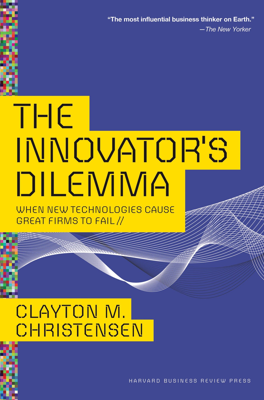Summary
Introduction to Technological Change
The disk drive industry's rapid evolution provides an ideal lens to understand why great companies fail despite being innovative and customer-focused. The industry's advancements offer valuable insights into the dynamics between sustaining and disruptive technologies.
Key Concepts
Sustaining vs. Disruptive Technologies
- Sustaining Technologies: Improve existing product performance. Established firms typically lead in these incremental or radical innovations.
- Disruptive Technologies: Offer different performance attributes, often leading to the failure of established firms. These technologies initially appeal to new or emerging markets.
Case Studies in Disruption
- Disk Drives: Miniaturization of disk drives from 14-inch to 3.5-inch disrupted the existing market.
- Excavators: Hydraulic technology replaced cable-actuated systems, upsetting established manufacturers.
- Retail and Consumer Electronics: Innovative strategies and new organizations allowed some companies to successfully navigate disruptive changes.
Organizational Challenges
Resource Allocation and Customer Influence
- Established firms often miss disruptive technologies due to strategic adherence to current customer demands, delaying their entry into new markets.
- Effective resource allocation processes are crucial, as upper management's good strategic intentions can be thwarted by middle management's adherence to profitable but existing customer needs.
Creating New Capabilities
- Established firms need to explore creating independent, smaller organizations focused on disruptive projects to avoid being constantly overshadowed by the needs of their mainstream operations.
- Acquisitions and spin-outs can be effective but must be managed to maintain the new entity's independence and focus.
Market Strategies and Dynamics
Performance Oversupply
- As technology surpasses market needs, disruptive technologies can take hold. For example, smaller disk drives became favored for their size over capacity, shifting market competition bases.
The Role of Independent Organizations
- Establishing separate units or acquiring companies that operate independently can help large firms successfully navigate disruptive technologies.
- Examples include HP's independent ink-jet unit and Johnson & Johnson's success through small, autonomous companies.
Practical Application
Learning-Oriented Market Approach
- Disruptive technology strategies benefit more from iterative learning and experimentation rather than rigid plans.
- Real-world examples, such as HP's Kittyhawk and Honda's North American motorcycle market entry, highlight the importance of discovering appropriate applications through trial and error.
Conclusion
Managers must balance maintaining capabilities for sustaining innovations while creating flexible, often independent structures to explore disruptive opportunities. Understanding and deftly handling the interplay between resource allocation, organizational structure, and market discovery are key to navigating the innovator’s dilemma successfully.
Per-chapter summary
- How Can Great Firms Fail? Insights From the Hard Disk Drive Industry
- Value Networks and the Impetus to Innovate
- Disruptive Technological Change in the Mechanical Excavator Industry
- What Goes Up, Can’t Go Down
- Give Responsibility for Disruptive Technologies to Organizations Whose Customers Need Them
- Match the Size of the Organization to the Size of the Market
- Discovering New and Emerging Markets
- How to Appraise Your Organization’s Capabilities and Disabilities
- Performance Provided, Market Demand, and the Product Life Cycle
- Managing Disruptive Technological Change: A Case Study
- The Dilemmas of Innovation: A Summary
